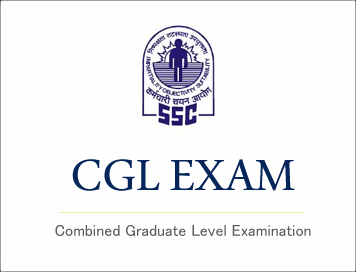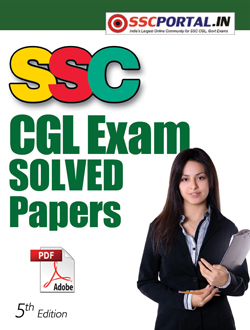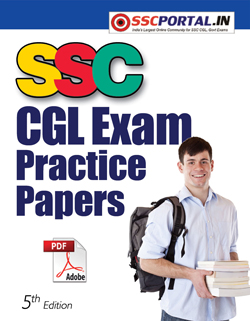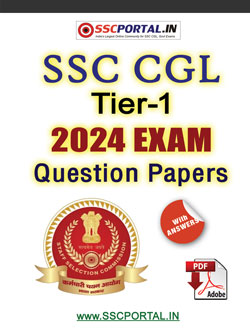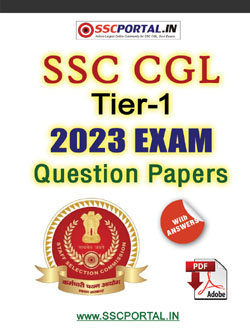NEW! SSC CGL PDF NOTES
NEW! SSC CGL TIER-2 NOTES
SSC: Combined Graduate Level Examination : Syllabus [Tier-2]
(Syllabus) SSC Combined Graduate Level Examination, (Tier-2)
Paper-I (Compulsory for all posts)
-
Sections: 2 (divided into modules)
-
Mode: Online (Computer-Based Test)
-
Total Duration: 2 hours 15 minutes
| Section | Module | Subject | No. of Questions | Marks | Time |
|---|---|---|---|---|---|
| Section-I | Module-I | Mathematical Abilities | 30 | 90 | 1 hour (combined) |
| Module-II | Reasoning and General Intelligence | 30 | 90 | ||
| Section-II | Module-I | English Language and Comprehension | 45 | 135 | 1 hour (combined) |
| Module-II | General Awareness | 25 | 75 | ||
| Section-III | Module-I | Computer Knowledge Test | 20 | 60 | 15 mins |
| Module-II | Data Entry Speed Test (DEST) | One Data Entry Task | Qualifying | 15 mins |
Detailed SSC CGL Tier-II Syllabus
Paper-I (Mandatory for all posts)
Mathematical Abilities
-
Number System
-
Percentages
-
Profit & Loss
-
Ratio and Proportion
-
Mixture and Alligation
-
Time and Work
-
Time, Speed, and Distance
-
Algebra
-
Geometry & Mensuration
-
Trigonometry
-
Data Interpretation (Graphs, Charts, Tables)
Reasoning and General Intelligence
-
Verbal and Non-verbal Reasoning
-
Coding-Decoding
-
Syllogism
-
Analogy
-
Series (Alphabetical and Number)
-
Blood Relations
-
Direction Sense
-
Classification
-
Statement-Conclusion
English Language and Comprehension
-
Reading Comprehension
-
Error Spotting
-
Fill in the Blanks
-
Synonyms and Antonyms
-
Sentence Improvement
-
Para-jumbles
-
Idioms & Phrases
-
Active-Passive Voice
-
Direct-Indirect Speech
General Awareness
-
Current Affairs (National & International)
-
History, Culture & Geography
-
Polity & Indian Constitution
-
Economics
-
Science and Technology
-
Important Government Schemes
-
Static GK
Computer Knowledge Test
-
Basics of Computers (Hardware & Software)
-
Internet & Email
-
MS Office (Word, Excel, PowerPoint)
-
Operating System basics
-
Cyber Security Awareness
DEST (Data Entry Skill Test)
-
One passage to type in English (2000 key depressions in 15 minutes)
-
Qualifying only, no marks awarded
Paper-II (Statistics) (Only for JSO Post)
| Subject | No. of Questions | Marks | Duration |
|---|---|---|---|
| Statistics | 100 | 200 | 2 Hours |
Key Topics:
-
Collection, Classification and Presentation of Statistical Data
-
Measures of Central Tendency and Dispersion
-
Correlation and Regression
-
Probability Theory
-
Time Series Analysis
-
Index Numbers
Paper-III (General Studies - Finance & Economics) (Only for Assistant Audit Officer/Assistant Accounts Officer)
| Subject | No. of Questions | Marks | Duration |
|---|---|---|---|
| Finance and Economics | 100 | 200 | 2 Hours |
Section-I: Finance and Accounts (80 Marks)
-
Fundamentals of Accounting
-
Basic Concepts of Accounting
-
Self-Balancing Ledger
Section-II: Economics and Governance (120 Marks)
-
Basic Economics Concepts
-
Indian Economy
-
Economic Reforms
-
Money and Banking
-
Role of Government in Economy


